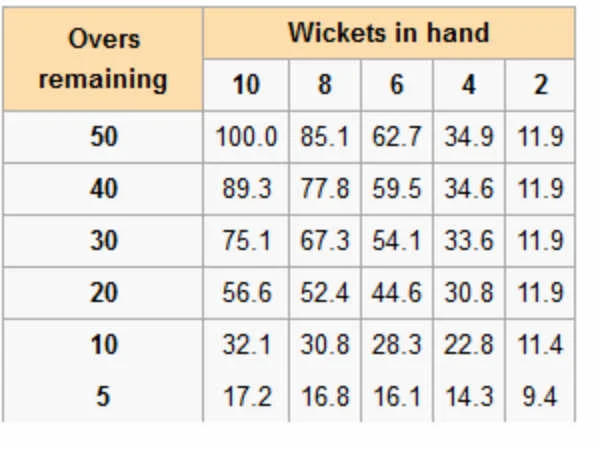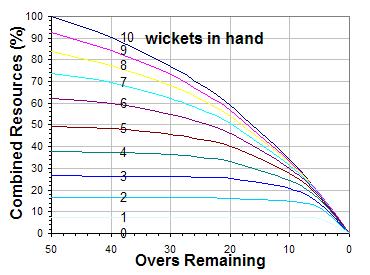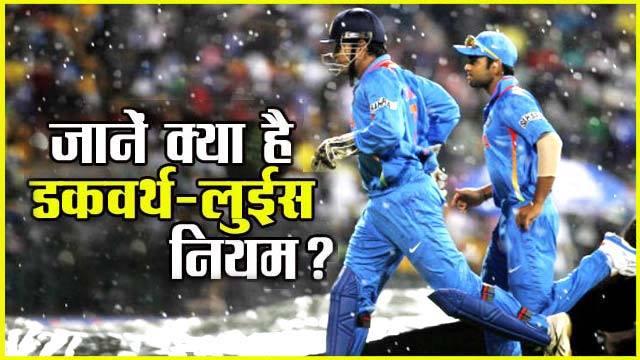All of you must watch cricket and why don’t you watch cricket today, it has become the most entertaining medium of our country. As much as there is a craze for cricket in our country, it is unlikely to be the case for any other sport. I am a child on the big side. The cricket world has also given us many big names and today cricket is also making our country’s name shine all over the world.
During rain-interrupted twenty-twenty over cricket matches, the target scores are calculated using this online DL calculator.
Let’s talk today why we are talking about cricket. People who always watch cricket know all the rules of cricket. You guys know that there are many rules in cricket which keep changing from time to time. But today we have brought for you such a rule which big cricket legends did not understand. Even many players of the Indian team do not understand this rule.
The reason behind this rule not being easily understood is that to understand this rule one needs to have a good bit of calculation, and if the calculation was good then the cricketer would not be an engineer.
But don’t worry, we have brought you the easiest way to understand this rule…
What is Duckworth-Lewis Method?
The Duckworth-Lewis method (D/L rule) is named after two English statisticians, Frank Duckworth and Tony Lewis. The Duckworth-Lewis rule began by adding the surnames of both. After this rule was introduced in cricket, it came to be considered very accurate and it is still in use today, although in the beginning there were many controversies about it. In any fixed overs match, this rule is calculated based on the wickets and overs used by both teams to score runs. These rules are recognized by the International Cricket Council. Under this rule new targets are set in reduced overs.
When Does Duckworth-Lewis Method Use in match?

The Duckworth-Lewis rule is required when a match is stopped for some reason. In other words, if a natural calamity has occurred, in simple language, water has come during the match, and if it has been damaged for a long time, then the decision of the match is reached by applying this rule.
How to Calculate Score by Duckworth-Lewis Method?

To determine this rule or apply it in any match, it is very important to play any one team i.e. it is necessary to finish the first innings, then Duckworth Lewis is brought. This rule is calculated by a table i.e. a chart which is also changed from time to time.
After one innings of the match, if there is any obstacle i.e. rain in the match, then the second innings or the innings of the other team or during their batting, a limited score is given in some limited overs which is calculated by the Duckworth-Lewis rule. This rule is considered to be perfect in such situations. It is very easy to use, just a table and some calculations are required.
According to the Duckworth-Lewis rule, both teams have two things or U say 2 resources. First total overs left and second total left wickets. Runs in a match are scored on the strength of these two instruments. So keeping this in mind the table of Duckworth-Lewis rule has been prepared. By which it is known that the playing team has what percentage of resources left.
If we look at this list or this table, we know that if the second innings starts, if you have 50 overs and 10 wickets left, it means you have 100% resources. After that, as the playing team uses their overs, the percentage of their resources decreases as shown in the table.
Example of Duckworth-Lewis Method

Suppose if there is a team which has played 20 overs in 50 overs and there are 30 overs left to play but 2 wickets have fallen and it rains in the match. Then according to the table that team has 67.3 percent resources left.
After the rain, when the match starts again, a total of 10 overs have been wasted. Meaning now that team has 20 overs left and has lost 2 wickets. Meaning now the team playing according to that table has only 52.4% resources left.
Now it will be seen that to find out how many tools the team has lost in total, first it will be seen how many tools the team had before the rain started and how many are left afterwards. Means when the match stopped then 67.3% of the resources were there and the match resumed when 52.4% of the resources were left i.e. the total loss was 67.3 – 52.4 = 14.9% loss.

Now the team that had batted first had used 100% of the equipment i.e. had played full 50 overs. Then 100% of his resources is subtracted from the other team’s resource damage percentage. So that the resources of both teams are equal and justice can be done. So 100 – 14.9 = 85.1% saved.
So now while giving target to other team it is taken care that score is given according to 85.1% means only. If the rain has disturbed the team that batted first, then the target is given to the team playing later.
For example, assume that the first playing team has scored 250 runs in 50 overs and the second team has scored 199 runs in 40 overs by losing 5 wickets and rain comes and the match is stopped. Now the Duckworth-Lewis rule is introduced to find Wiener.
The team that played first played 50 overs, that means that team has used 100% of the equipment. When the other team was fielded, it also had 100% resources. He lost 5 wickets in 40 overs and scored some runs. Now the match was stopped due to rain.
Then according to the Duckworth-Lewis method table, that team had 27.5 resources left. Means 27.5% of the resources of the team playing in the second innings were lost. Means 100 – 27.5 = 72.5% means he used. If he gets less means than the first playing team, the score of the other team will have to be reduced according to the means. ie 72.5/100
The first team scored 250, so the second team’s target will be 250 x 72.5/100 = 181.25. So the second team now needs a total of 182 runs, but they have already scored 199 runs, that is, the second team has won this match by 18 runs.
